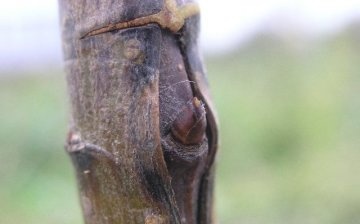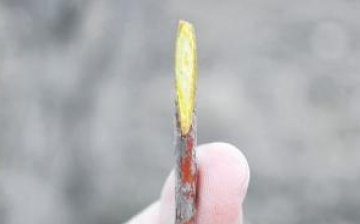Correct grafting of stone fruits. Cherry grafting
Grafting stone fruit is, of course, not easy, but worthwhile, according to knowledgeable gardeners.
Content
- Features of vaccination
- Methods of grafting stone fruit crops
Features of vaccination
If you want to plant stone fruits, you need thick cuttings. This is due to the fact that the probability that a thin stalk will take root is very small. In addition, there are some requirements for the time of harvesting cuttings, regardless of whether they are fruit or stone fruit, namely: harvesting is carried out before the onset of the first cold weather. It should be borne in mind that storing cuttings of apple trees or pears in the basement will not harm them in any way, which cannot be said about cherries or cherries. Thus, the most suitable place for storing stone fruits is on the street. It is necessary to place the cuttings on the north side of the house, placing them in a specially equipped place, for the preparation of which you will need plastic wrap, sawdust or wet sand. Sprinkle sand on the cling film and place the cuttings on top, wrapped in a rag for security. Then sprinkle everything first with frozen sawdust, the layer of which should ideally be 30 cm, and then dry. Thus, your cuttings will be reliably protected from heat.
Let's talk now about the time of the vaccination itself and how to properly carry it out. Ideally, if you do this at the beginning of March, when the thaws begin. Bring the cuttings into the house to allow them to thaw, while keeping them in the refrigerator on a damp cloth for several days. The day before the grafting itself, carefully update the cuttings, and place the cuttings in water.
Do not forget that you need to plant stone fruit crops on trees that are not older than 5 years, if you use an older plant as a rootstock, there is a risk of ruining the scion.
Methods of grafting stone fruit crops
There are several ways of vaccination, let's take a closer look at each of them.
- Method one: budding in the crown. This method is the simplest and allows you to vaccinate without the budding knife. Take a regular knife and make a T-shaped cut, while being careful not to hook the wood, otherwise the peephole may die, swam with gum. Carefully spread the bark with your nails and cut off the shield with a safety razor, again try not to touch the wood and make sure that the cut is about 2 cm.Then you need to insert the shield as quickly and accurately as possible. It is recommended to vaccinate in the morning, when the air humidity is high enough and reaches 60%, otherwise the exposed stone tissue may oxidize.
- The second method of grafting is budding in the butt, which is optimal if the tree is very young. How to do it: on each branch you need to insert 3 shields, the distance between which should be about 6 cm, and then wrap with foil. This method involves vaccination in the first summer, with the most optimal months being June and July. If you decide to start budding in the first days of August, make sure that the trees are abundantly watered. It is also important that within three weeks after budding, the bark should lag well, in this case, the shield, overgrown with callus, can easily survive the winter. A month after budding, it is necessary to remove the harness, while leaving a small piece of film just above the upper eye.In the spring, this will allow you to easily find the upper budding and cut off the branch half a centimeter above the bud. Then you need to cover the wound with unsalted fat. Remember to remove all unvaccinated branches and buds at once.
- Another type of vaccination is the so-called spring vaccination, which must be carried out at the end of April by copulation without a tongue in order for the gum to actively appear. In this case, it is necessary to monitor the same length of cuttings of the cutting and the tree. If the scion is slightly thinner than the rootstock, carefully align its bottom and one of the sides with the cambial layer. Do not forget to leave 2 buds on the handle. At the end of the grafting, loosely cover the stalk with a film to protect it from drying out, but a paper cap can save it from heating. They remove both the one and the other protection with the appearance of the first leaves.
And finally, it is worth focusing your attention on the need to cut off the rudiments of flowers if you grafted cherry cuttings. It is necessary to remove the garter itself no earlier than at the moment when the shoots reach a length of 25 cm.It is also necessary to constantly cut off the shoots below the grafts during the summer, this should be done even if the kidney itself has died, since if the shield is alive, then on it through for some time from 4 to 6 new shoots may appear.








